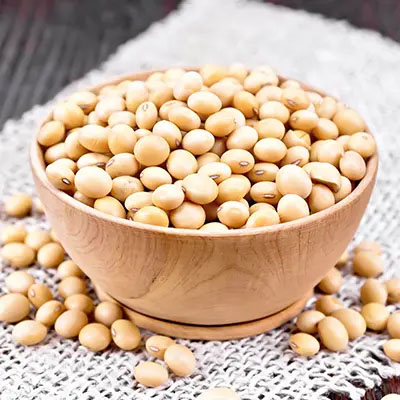- Home
- About
-
Our Products
- Grains
- Oil seeds
- Meals
- Oils
- Derivate
- UBM Group
- UBM Community
- Press
- Contact

March expectations - The volume of soybeans crushed
The optimistic figures displayed by the US National Oilseed Processors Association (NOPA) on the volume of soybeans processed in the first quarter of 2020 will be difficult to maintain during the year.
The volume of soybeans crushed in the US during March beat expectations, coming in at 5.25 million tons and setting a new daily crush rate record, while soyoil stocks fell over 3% on the month falling short of analysts’ expectations.
USDA data showed a total of 5.23 million mt of beans went through the grind.
The figure was above the analysts’ consensus of 5.2 million tons, and up from the 4.87 million tons crushed in March last year and the 4.7 million tons crushed in February. A total of 959,000 mt of soyoil and 3.84 million tons of soymeal were produced during the month, the USDA data showed.
March’s daily crush rate came in just shy of 169,000 million tons – a new record – and increasing from February’s rate of 6.04 million bu.
During the first quarter of 2020, the US crushed 15.1 million tons of soybeans, up 5.9% on the year, at an average daily rate of 6.11 million bu, up 4.8%.
NOPA, which accounts for 95% of the crushing capacity in the US, estimated the US March crush in mid-April at 4.94 million tons, beating the upper end of trade expectations of 4.88 million tons.
Total soyoil stocks by the end of March fell 2% on the month to 1.06 million tons while analysts were expecting to see an increase in stock levels to 1.075 million tons.
More exactly, the United States reports record figures during the COVID 19 pandemic, which suggest that they remain a leader and decision-maker in the soybean market. Encouraging figures that would lead to the conclusion that the engines of American processing plants are running at full speed and will remain so for the rest of the year. However, important aspects are omitted in reading and analysing of these figures:
As a result, the US soybean processing industry has most likely completed its heyday for the current year, following a considerable decline until the new fall harvest. Meanwhile, Brazil and Argentina will return to the forefront of international flows, with a more competitive offer than the North American player.
Prices in the main European destinations continue their downward trend from month to month, reaching the comfortable level of last year. Where they will stop depends a lot on the recovery of downstream industries, starting with feed production, continuing with meat, the rapid recovery of distribution chains and ending with the purchasing power of the final consumer. As such a complex mechanism cannot return to normal overnight, the pressure remains on the price and the consumers of soybean meal and oil expect an even lower level, being fed by the generous offer in the market.
However, as history teaches us, the markets are waiting for any small signal to return to the upward trend, whether it will be the smallest problem in North American sowings in the coming period or whether the investment funds will find in the product ”soybean meal” again an investment opportunity from which to generate profits in times of crisis.
Source: Agricensus
Author: Leonardo Lambrea – Head of Trade – Ubm Agri Trade